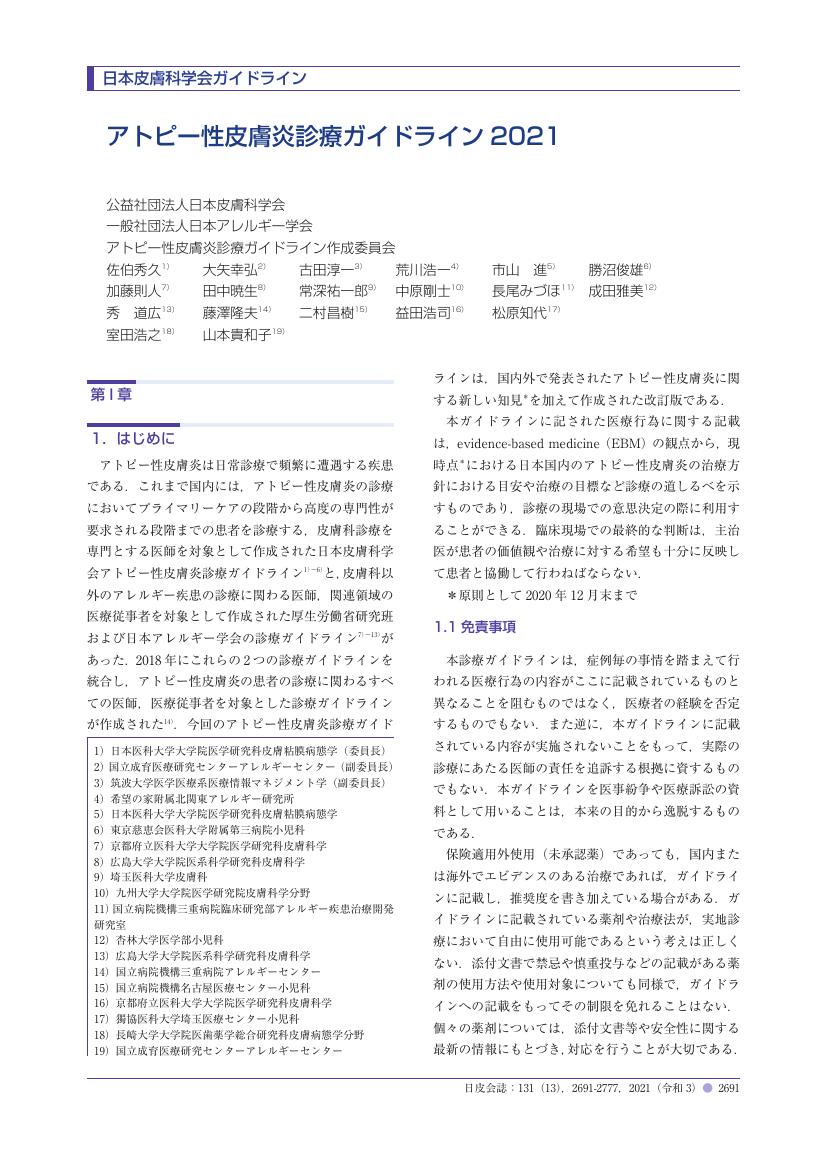37 0 0 0 OA アトピー性皮膚炎診療ガイドライン2021
3 0 0 0 OA アトピー性皮膚炎診療ガイドライン2021
- 著者
- 公益社団法人日本皮膚科学会 一般社団法人日本アレルギー学会 アトピー性皮膚炎診療ガイドライン作成委員会 佐伯 秀久 大矢 幸弘 古田 淳一 荒川 浩一 市山 進 勝沼 俊雄 加藤 則人 田中 暁生 常深 祐一郎 中原 剛士 長尾 みづほ 成田 雅美 秀 道広 藤澤 隆夫 二村 昌樹 益田 浩司 松原 知代 室田 浩之 山本 貴和子
- 出版者
- 公益社団法人 日本皮膚科学会
- 雑誌
- 日本皮膚科学会雑誌 (ISSN:0021499X)
- 巻号頁・発行日
- vol.131, no.13, pp.2691-2777, 2021-12-20 (Released:2021-12-20)
- 参考文献数
- 503
- 被引用文献数
- 2
- 著者
- 原 正美 長谷川 俊史 松原 知代 山口 公一 百瀬 希美 古川 漸
- 出版者
- 一般社団法人 日本食育学会
- 雑誌
- 日本食育学会誌 (ISSN:18824773)
- 巻号頁・発行日
- vol.7, no.2, pp.155-160, 2013-04-25 (Released:2016-01-29)
- 参考文献数
- 3
Regardless of the consumption of the same amount of allergen-related foods, allergens were detected in some breast milk samples while not in the others. Breast milk is a secretory fluid. Therefore, concentrations of secretory fluid could potentially be linked with the concentration of allergens in the breast milk. Thus, the total protein and the levels of one particular protein, lactoferrin, in the breast milk were measured.The concentration of ovalbumin in breast milk was measured using an enzyme-linked immunosorbent assay (ELISA) kit, previously reported by us. The limit of ovalbumin level in breast milk is 312ng/ml. The Lowry method was used for measuring the total protein. A Lactoferrin Human ELISA Kit was used to measure the lactoferrin levels.Therefore, we investigated cases wherein the level of ovalbumin was below or above 312ng/ml. We found no significant difference when we compared the total protein level between breast milk with ovalbumin below 312 ng/ml and that above 312ng/ml.When we compared the lactoferrin level between breast milk with ovalbumin below 312ng/ml and that above 312ng/ml, a significant difference was observed.Consequently, if the ovalbumin level in breast milk is >312ng/ml, the lactoferrin level is high, while if the ovalbumin level is <312 ng/ml, the lactoferrin level is low (P<0.01).When evaluating the concentrations of ovalbumin in breast milk, the lactoferrin levels might be used as the point of reference.

